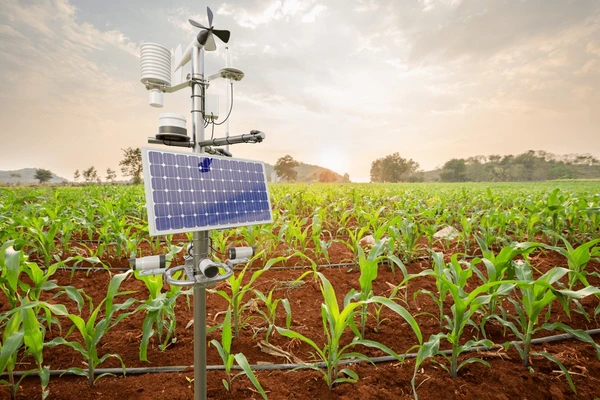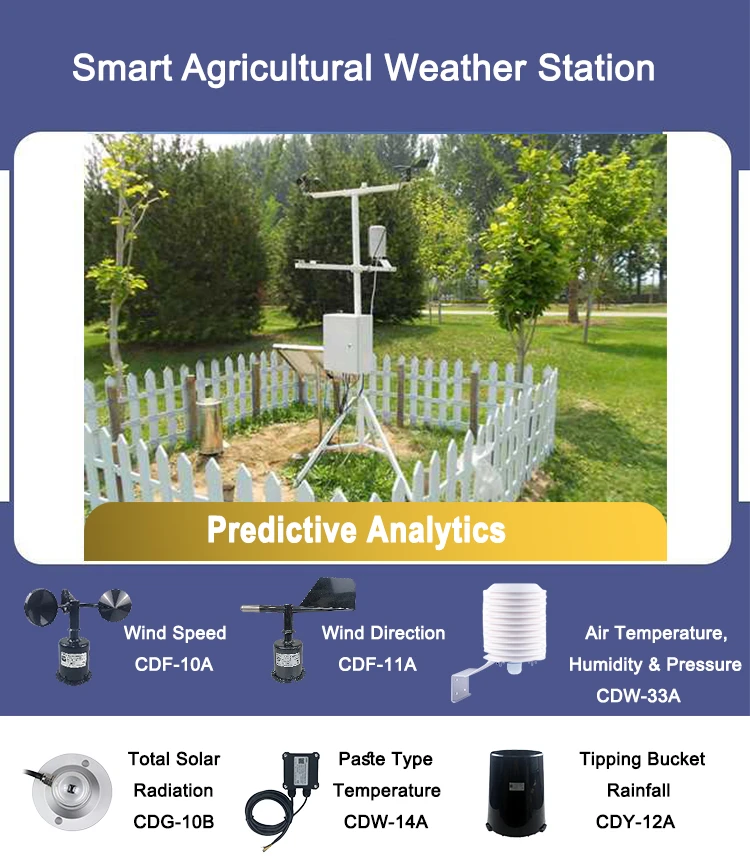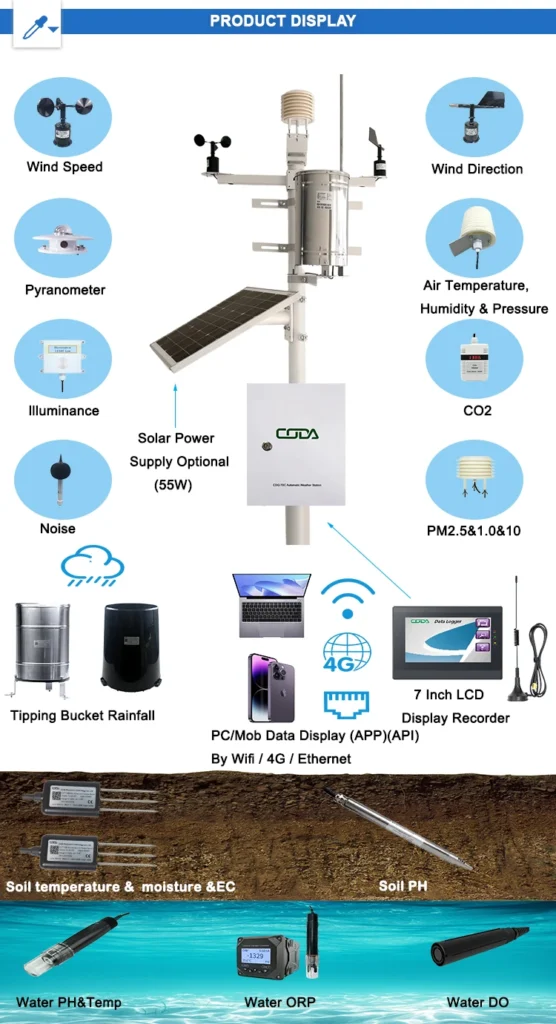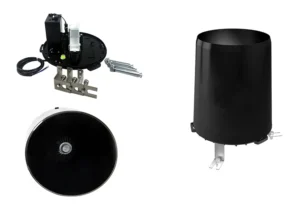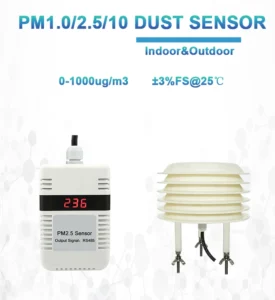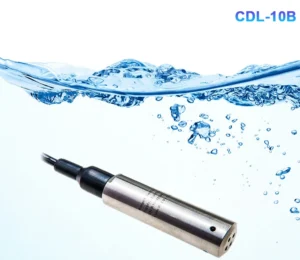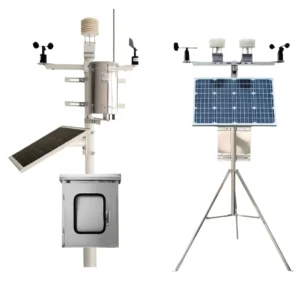How Weather Sensors Promote Sustainable Agriculture Practices
Introduction:
Agriculture is essential for meeting the needs of a growing world population. Traditional farming methods often face big problems. These include unexpected weather, few resources, and environmental problems.
Farmers and agricultural researchers are using new technologies more often. This helps solve problems and promote sustainable farming.
Among these, weather sensors have emerged as game-changers in modern agriculture. These tools provide real-time data on weather conditions. This helps farmers make better choices.
It helps them improve their methods and supports farming that is good for the environment. Let’s look at how weather sensors support sustainable farming. They also help make farming more efficient.
The Role of Weather Sensors in Precision Agriculture
Precision agriculture aims to grow more crops. It does this by using fewer resources and causing less harm to the environment. Weather sensors are key to this method. They give correct and up-to-date weather information.
This helps farmers make good choices about watering, fertilizing, and pest control. Farmers can use these insights to change their farming methods based on the weather. This helps them use resources well and cut down on waste.
One main benefit of weather sensors in precision farming is that they give accurate soil moisture readings. Soil moisture is essential for healthy plant growth.
Farmers can check soil moisture in real time. This helps them set the best irrigation schedules. This helps avoid overwatering and under-irrigation.
This saves water and stops waterlogging, which can damage crops. Weather sensors give farmers accurate data. This helps them use water at the right time and place. They save a lot of water and help crops grow better.
Enhancing Crop Yield Predictions with Weather Sensors
Good predictions of crop yields are important for managing and planning farms well. Weather sensors help make better predictions for crop yields. They give trustworthy information on key factors such as temperature, humidity, rainfall, and sunlight.
Farmers can use this information to make better models. This helps them figure out how much they will collect. They can plan when to harvest. They can also manage storage and transportation.
Weather sensors help detect crop diseases and pest outbreaks early. Farmers can study weather patterns. This helps them predict disease or pest problems. They can then take action to prevent these issues.
For instance, they might adjust irrigation schedules, apply targeted pest control methods, or introduce beneficial insects to the ecosystem. These steps reduce the use of chemical pesticides. They help protect the environment and keep crop yields high.
Optimizing Resources Through Weather Sensors
Using resources wisely is key to sustainable farming. Weather sensors play a key role in achieving this goal in many parts of agriculture.
Water management is one area where weather sensors make a big difference. Weather sensors track rainfall, temperature, and humidity in real time. This helps make smart irrigation systems.
These systems use sensor data to find out when and how much water crops need. They base this on the current weather and the needs of the plants.
This targeted irrigation method cuts down on water waste. It also lowers the energy needed to pump water. This helps promote sustainable water use.
Weather sensors help improve how we use fertilizer. Farmers can monitor things like temperature and soil moisture. This helps them see how nutrients go into the soil and are taken up by plants.
This information helps make sure fertilizers are used at the right time and in the right amounts. This reduces waste and limits nutrient runoff into nearby water systems.
Preventing runoff is important for keeping water clean. It helps avoid problems like eutrophication. Eutrophication is a harmful process. It happens when there are too many nutrients in the water.
Weather Sensors and Climate Change Resilience
Climate change creates big problems for farming. This is due to unpredictable weather and extreme climate events. Weather sensors are important tools. They help farmers face challenges and become stronger.
Farmers can easily find and handle climate risks. They use real-time data from weather sensors. For example, if a sudden drop in temperature is noticed, we can take action. We can use protective covers or turn on heaters to keep crops safe from frost damage.
When sensors find a drought, farmers can use ways to save water. They can change irrigation schedules and grow drought-resistant crops.
Weather sensors aid in long-term planning for farming, not just in managing risks. Their skill in tracking and giving accurate weather data is very important.
This helps researchers and policymakers see how climate change impacts farming. These insights are important for making plans to adjust to changing conditions. They help lessen the bad effects on crop yields and food security.
Streamlining Decisions with Weather Sensor Data
Real-time weather sensor data helps farmers make better decisions. These sensors give accurate and timely weather information. This helps with planning in many areas. These include when to plant, what crops to choose, and how to control pests.
Farmers can use data from weather sensors. This helps them find the best time to plant seeds. They can base this on the right temperature and soil moisture levels. This improves the success of germination and helps crops grow strong.
Early warning systems with weather sensors can warn farmers about possible pest outbreaks. This helps them manage pests before they cause serious damage.
Weather sensors help farmers make easier decisions. This allows them to manage risks better and improve their practices. This helps improve productivity, cut waste, and support a more sustainable farming system.
Conclusion
Weather sensors have changed sustainable farming. They provide accurate and real-time weather information. Their work in precision farming is very important. They use resources wisely and adapt to climate change. They also make decisions easier.
Using these tools improves farming practices and lowers environmental impact. To move forward, we must embrace and use these technologies in farming around the world. This is key for sustainable and strong agriculture.
For businesses unsure about using new technology in sensor solutions, there is now an easier way to move forward.
Hunan Coda Electronic Tech Co., Ltd is committed to giving honest and enjoyable service. We tailor our products to fit different customer needs with quality solutions.
Advanced technology is key to sensor solutions. However, smart customers know that improving material quality and production standards is just as important.
OEM sensor solutions provide various systems for monitoring the environment. This lets users select and use OEM sensors and related technologies for environmental purposes.
